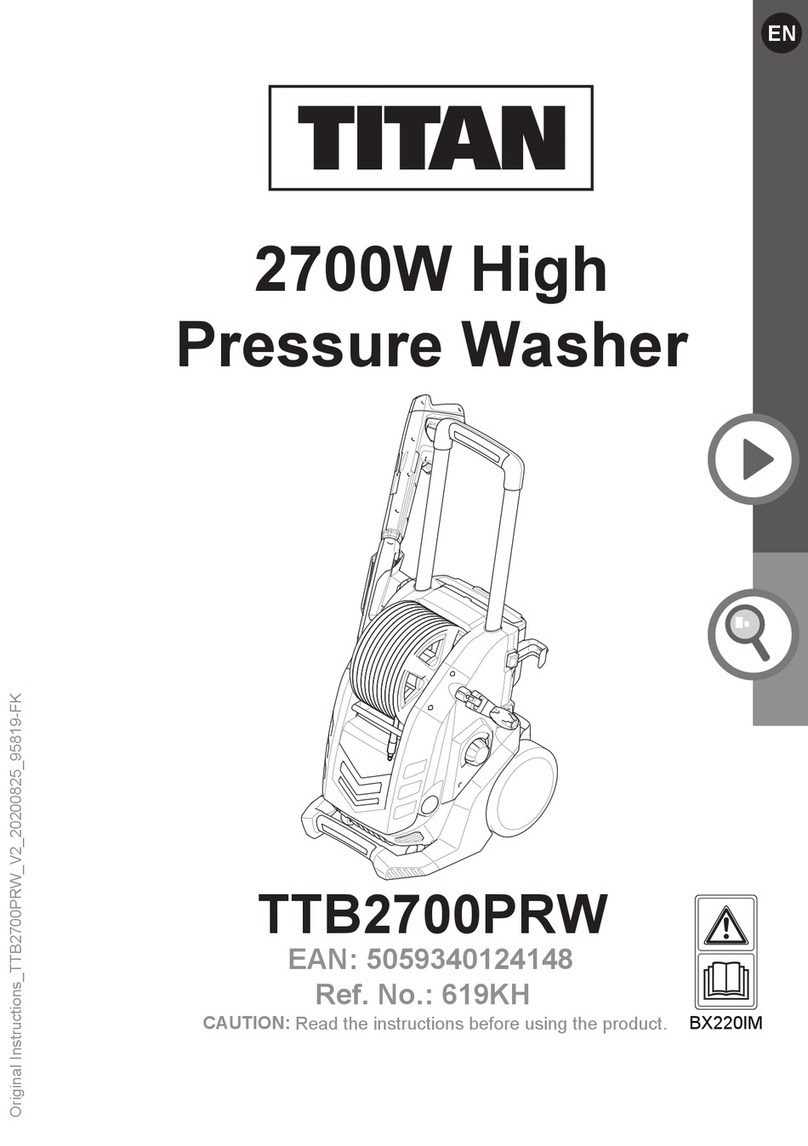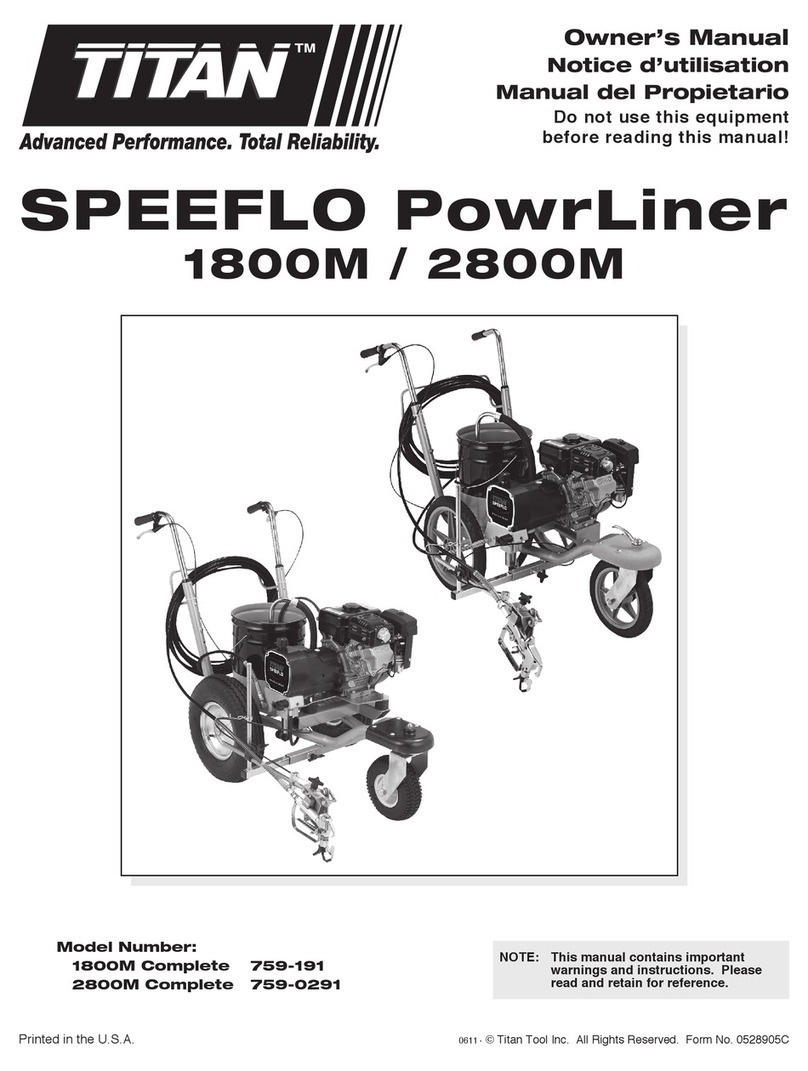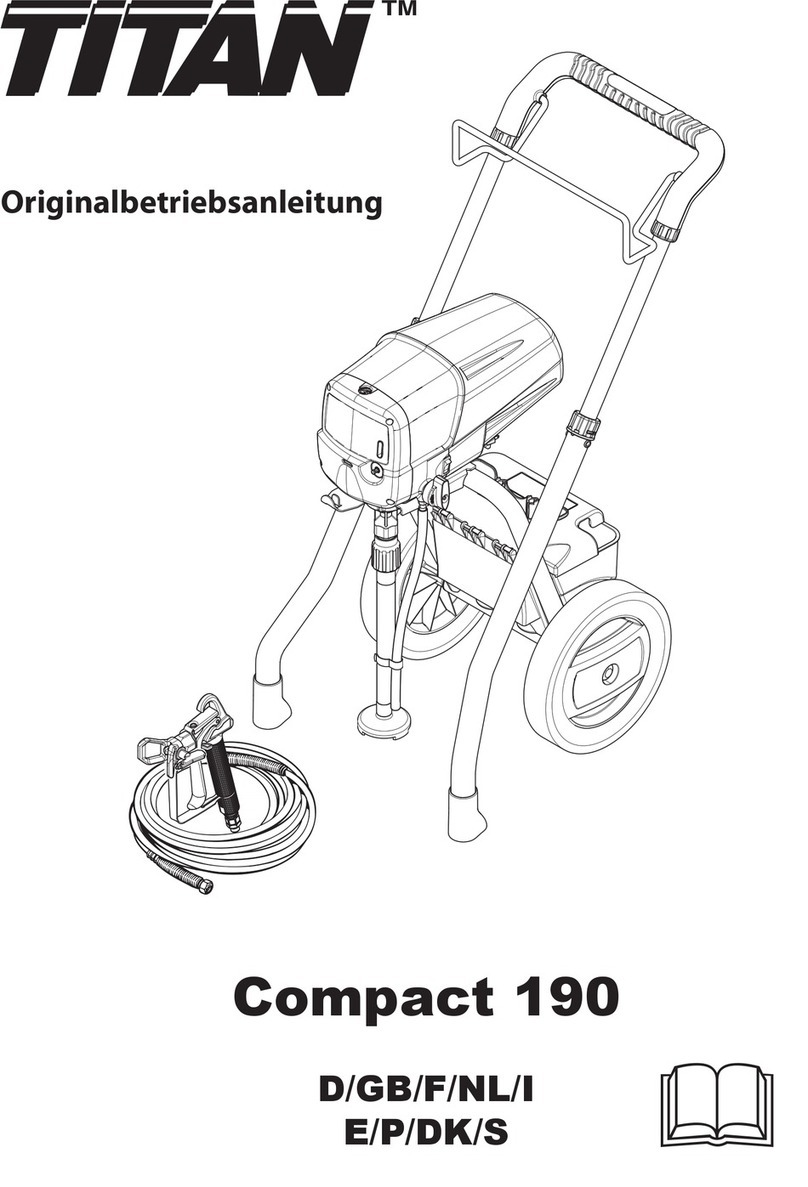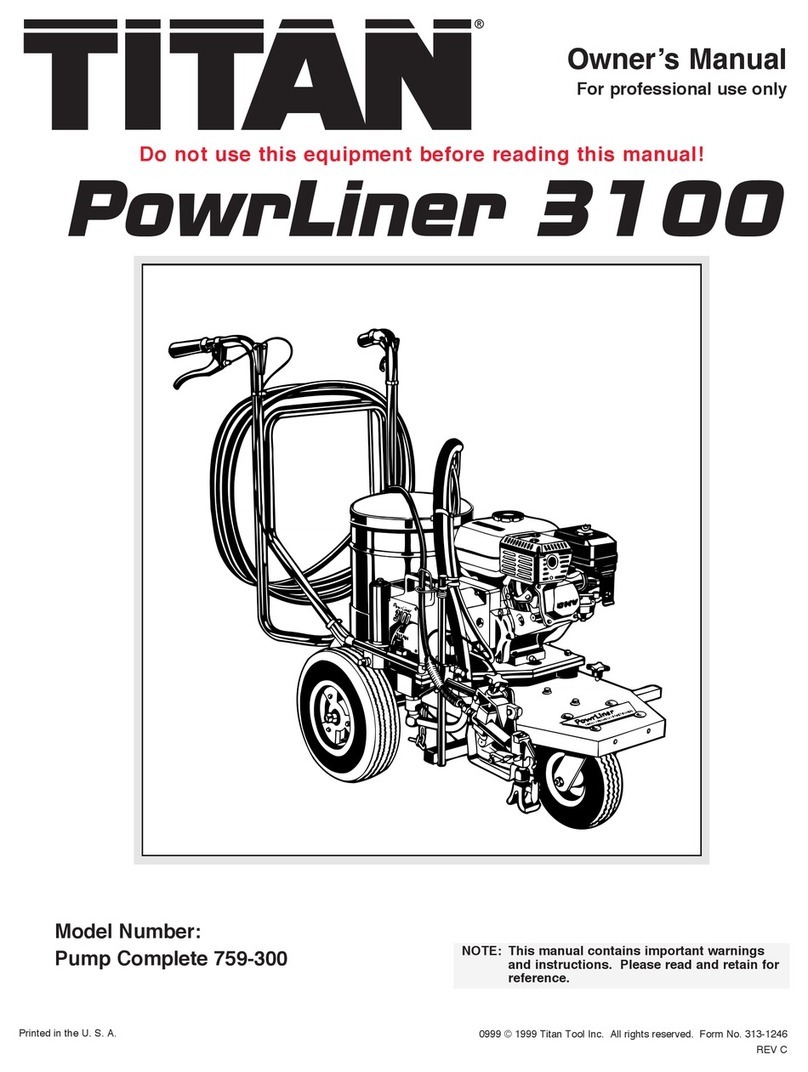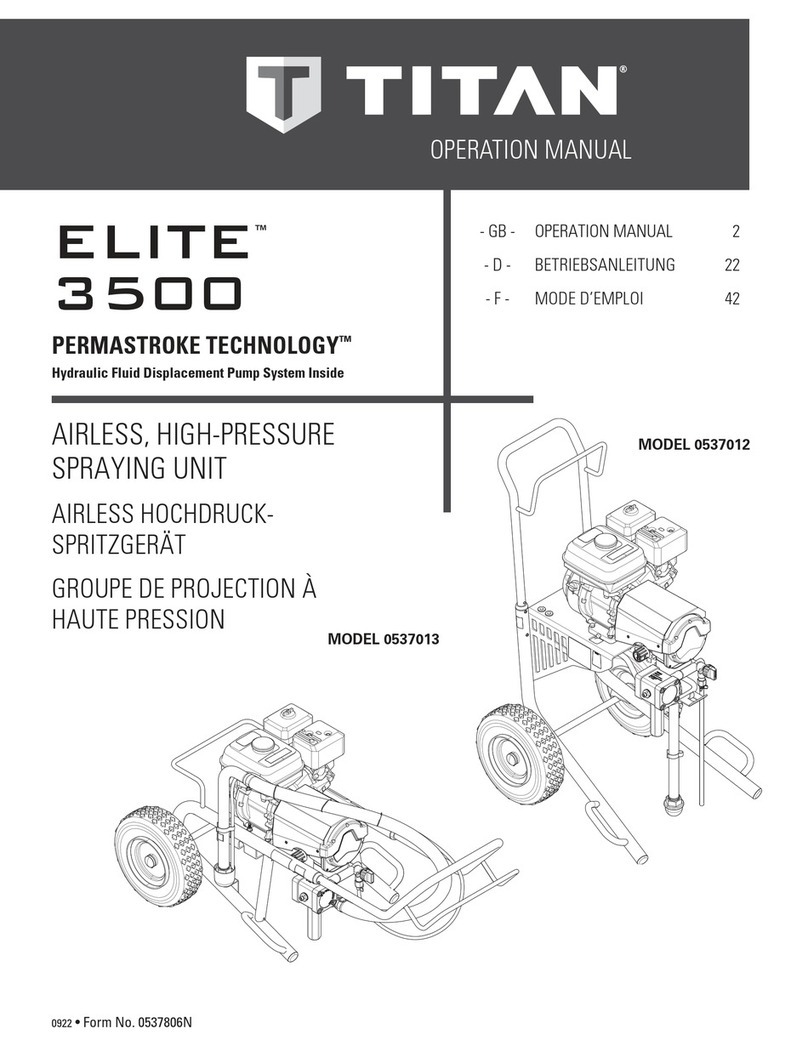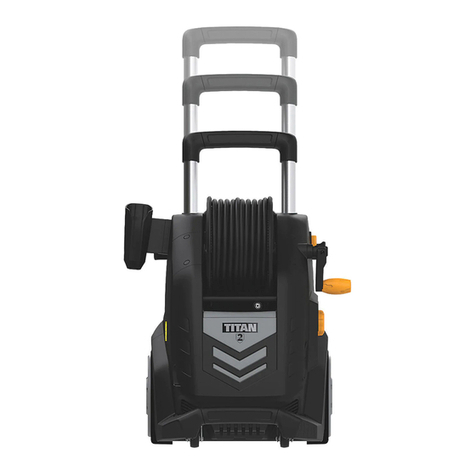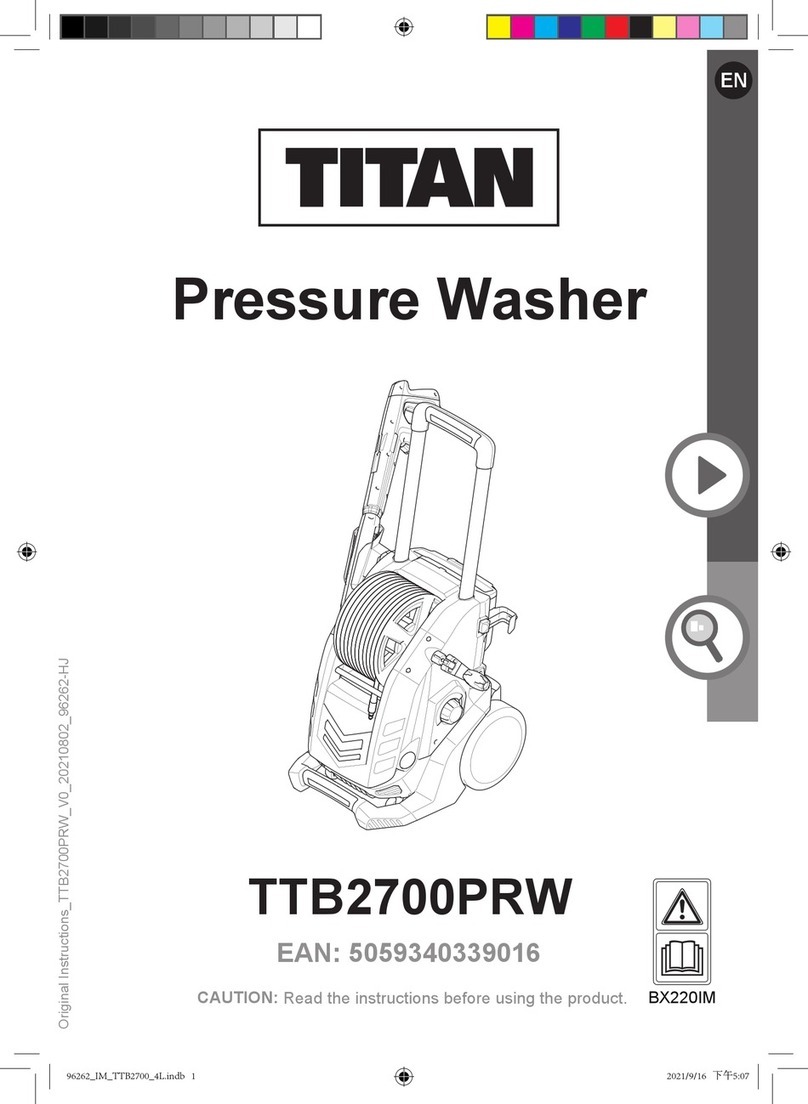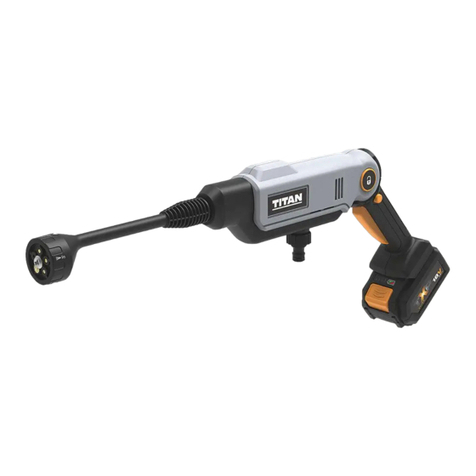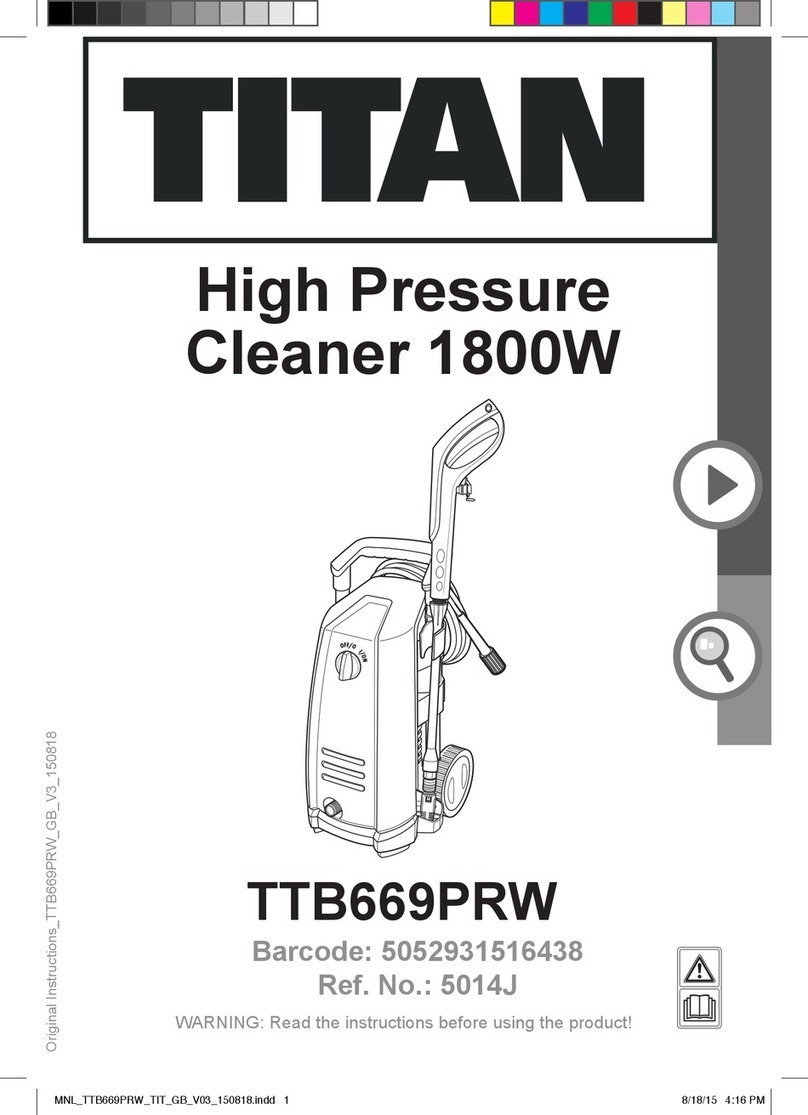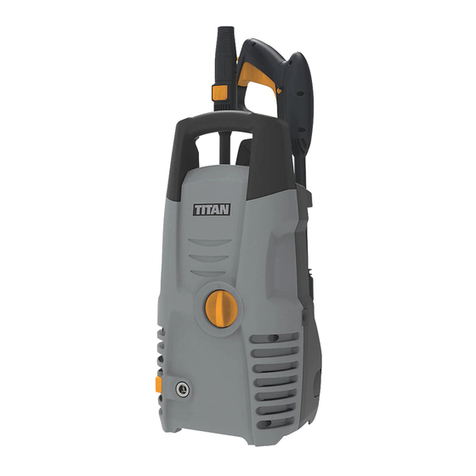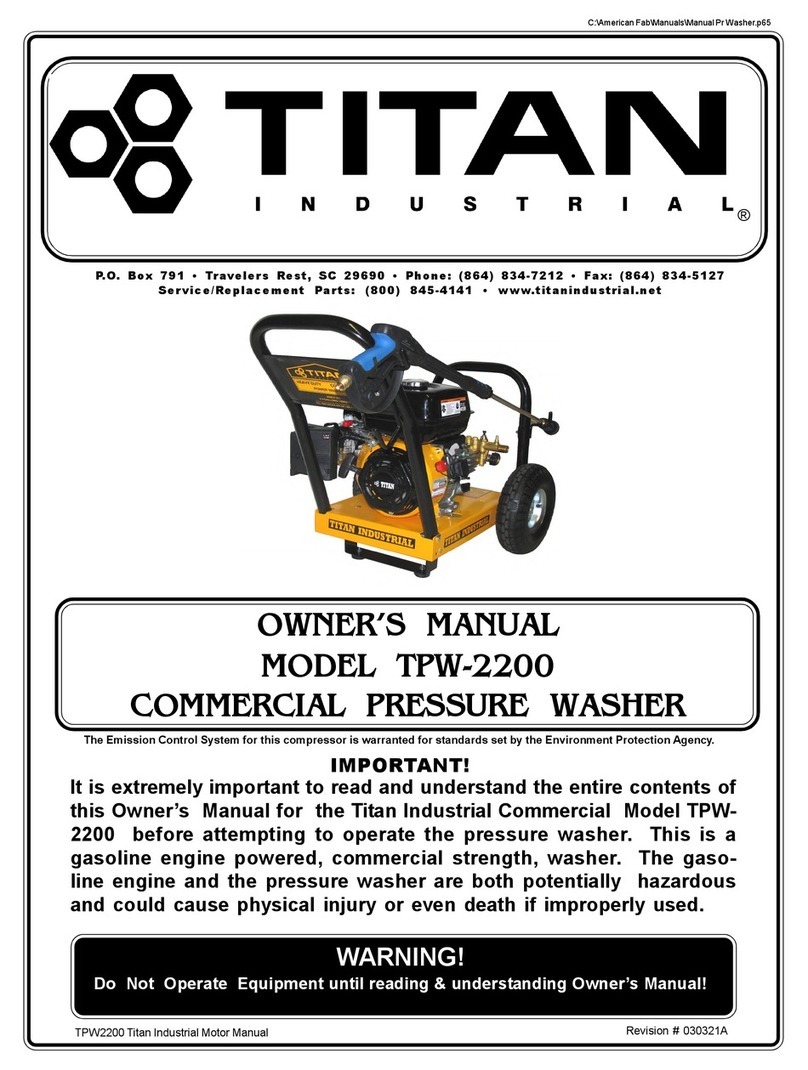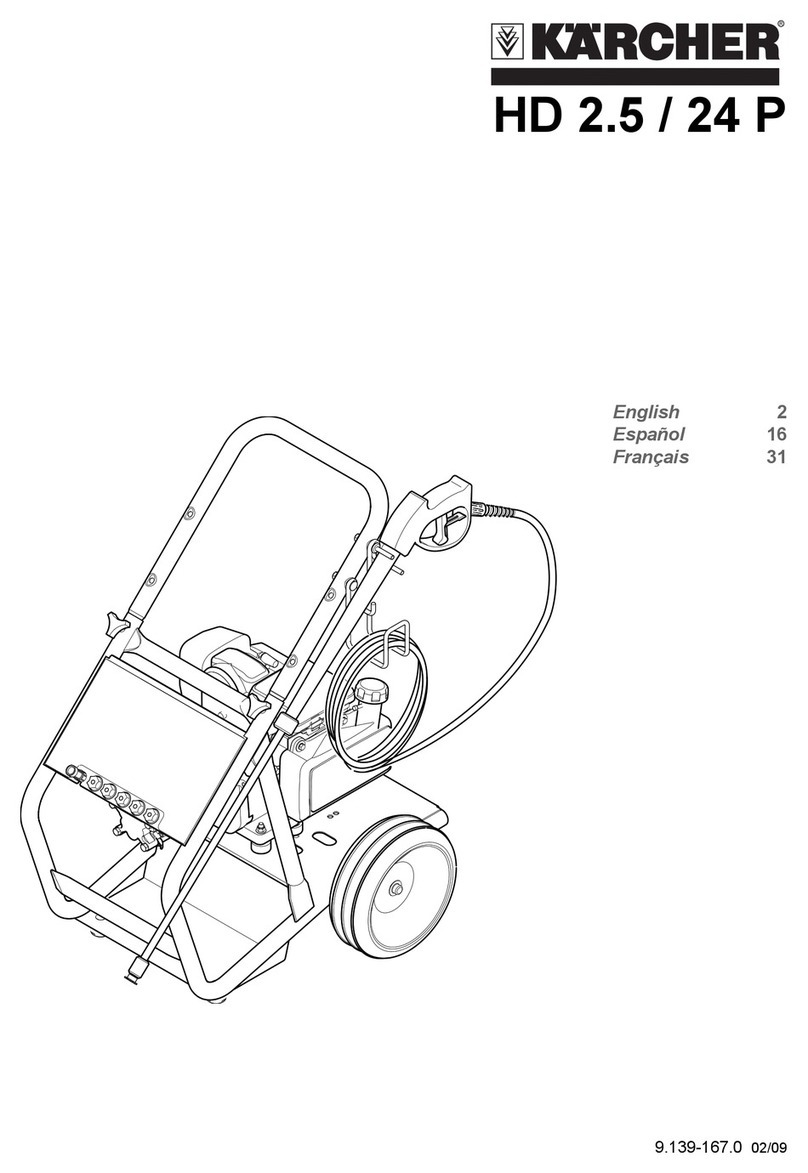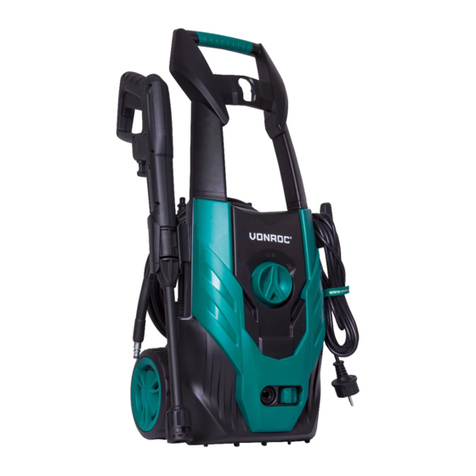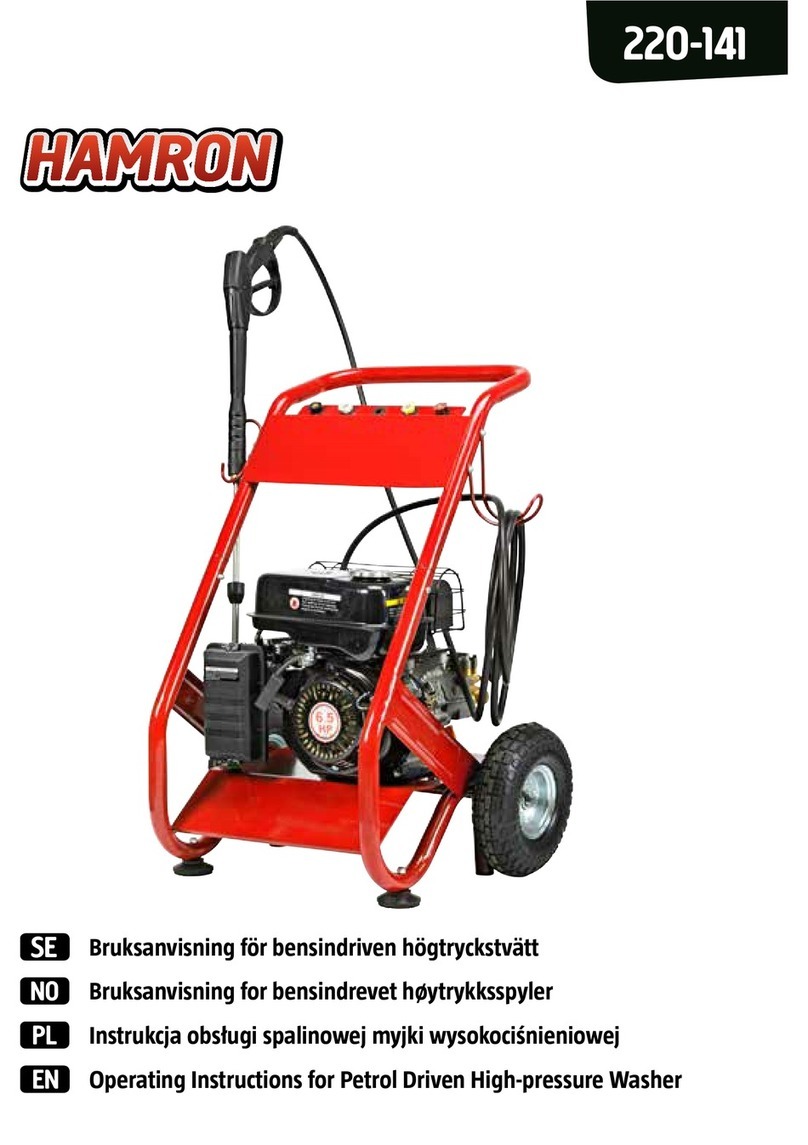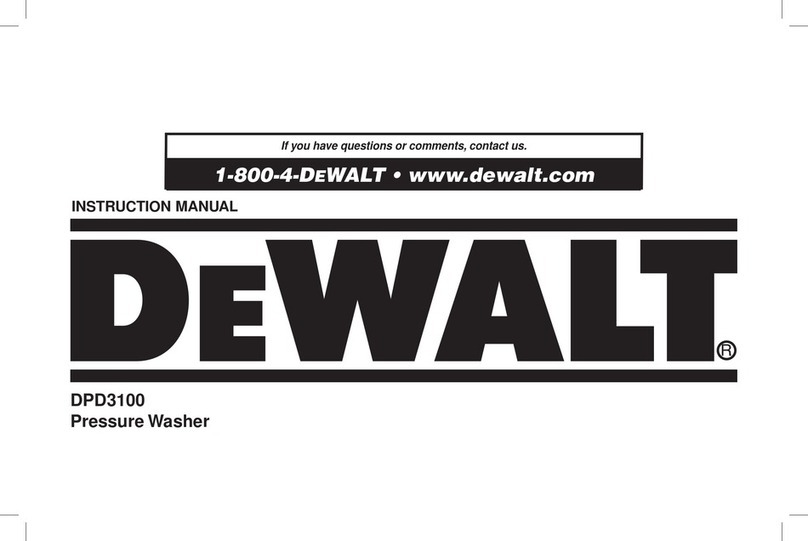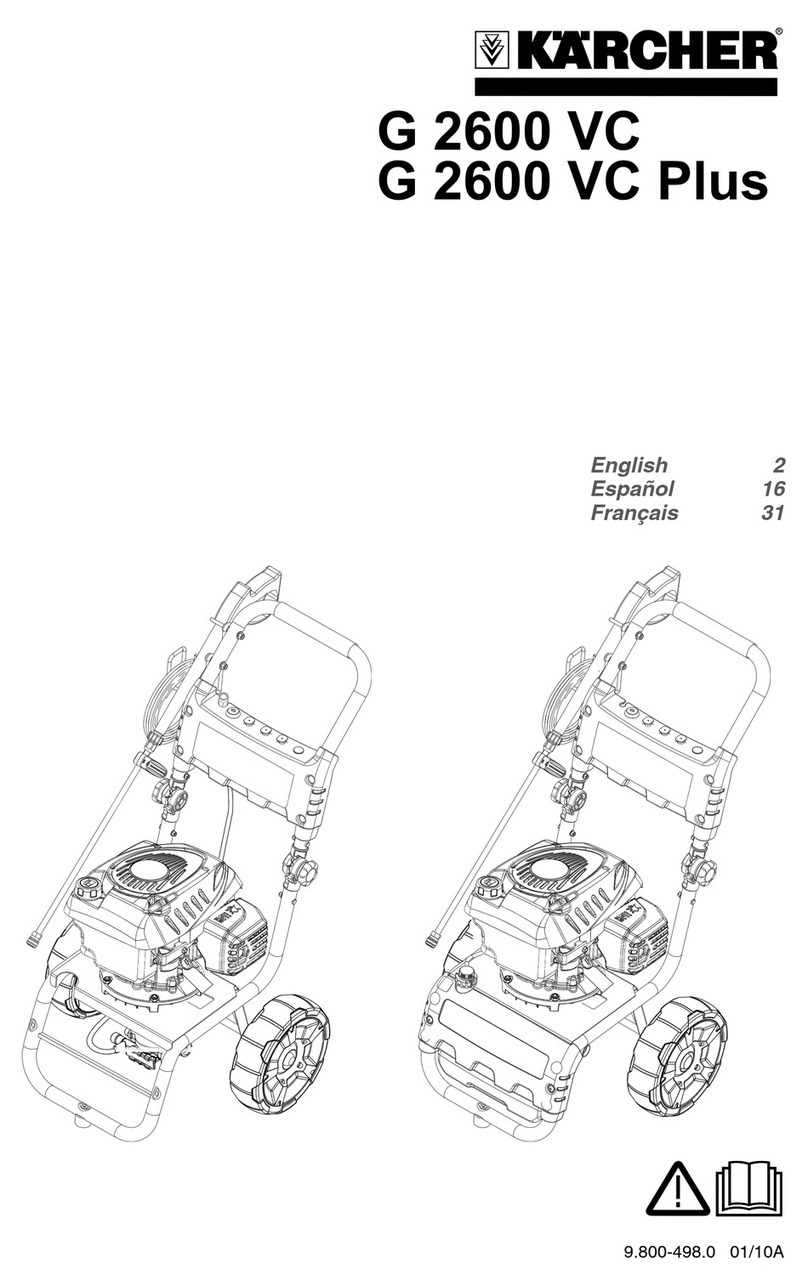4 PowrTwin Plus
GB
Safety precautions
1.3 Gasoline Engine Safety
1. Gas engines are designed to give safe and dependable service
if operated according to instructions. Read and understand
UIFFOHJOFNBOVGBDUVSFST0XOFST.BOVBMCFGPSFPQFSBUJOHthe engine. Failure to do so could result in personal injury or
equipment damage.
2. To prevent re hazards and to provide adequate ventilation,
keep the engine at least 1 meter (3 feet) away from buildings
and other equipment during operation. Do not place
ammable objects close to the engine.
3. People who are not operating the device must stay away from
the area of operation due to a possibility of burns from hot
engine components or injury from any equipment the engine
may be used to operate.
,OPXIPXUPTUPQUIFFOHJOFRVJDLMZBOEVOEFSTUBOEUIFPQFSBUJPOPGBMMDPOUSPMT/FWFSQFSNJUBOZPOFUPPQFSBUFUIFengine without proper instructions.
5. Gasoline is extremely ammable and is explosive under
certain conditions.
6. Refuel in a well-ventilated area with the engine stopped. Do
not smoke or allow ames or sparks in the refueling area or
where gasoline is stored.
7. Do not overll the fuel tank. After refueling, make sure the
tank cap is closed properly and securely.
8. Be careful not to spill fuel when refueling. Fuel vapor or
spilled fuel may ignite. If any fuel is spilled, make sure the area
is dry before starting the engine.
/FWFSSVOUIFFOHJOFJOBOFODMPTFEPSDPOñOFEBSFB&YIBVTUcontains poisonous carbon monoxide gas; exposure may
cause loss of consciousness and may lead to death.
10. The muer becomes very hot during operation and remains
hot for a while after stopping the engine. Be careful not to
touch the muer while it is hot. To avoid severe burns or re
hazards, let the engine cool before transporting it or storing it
indoors.
/FWFSTIJQUSBOTQPSUTQSBZFSXJUIHBTPMJOFJOUIFUBOLDO NOT use this equipment to spray water or acid.
Attention
Do not lift by cart handle when loading or unloading.
Device is very heavy. Three-person lift is required.
1.4 Fueling (gas engine)
Gasoline is extremely flammable and is explosive
under certain conditions.
Fuel Specications
r6TFBVUPNPUJWFHBTPMJOFUIBUIBTBQVNQPDUBOFOVNCFSPG86 or higher, or that has a research octane number of 91 or
IJHIFS6TFPGBMPXFSPDUBOFHBTPMJOFDBODBVTFQFSTJTUFOU“pinging” or heavy “spark knock” (a metallic rapping noise)
which, if severe, can lead to engine damage.
iIf “spark knock” or “pinging” occurs at a steady
engine speed under normal load, change brands of
gasoline. If spark knock or pinging persists, consult
an authorized dealer of the engine manufacturer.
Failure to do so is considered misuse, and damage
caused by misuse is not covered by the engine
manufacturer’s limited warranty.
Occasionally you may experience light spark knock
while operating under heavy loads. This is no
cause for concern, it simply means your engine is
operating eciently.
r6OMFBEFEGVFMQSPEVDFTGFXFSFOHJOFBOETQBSLQMVHEFQPTJUTand extends the life of the exhaust system components.
r/FWFSVTFTUBMFPSDPOUBNJOBUFEHBTPMJOFPSBOPJMHBTPMJOFmixture. Avoid getting dirt, dust, or water in the fuel tank.
Gasolines Containing Alcohol
If you decide to use a gasoline containing alcohol (gasohol), be
sure its octane rating is at least as high as that recommended by
the engine manufacturer. There are two types of “gasohol”: one
containing ethanol, and the other containing methanol. Do not use
gasohol that contains more than 10% ethanol. Do not use gasoline
containing methanol (methyl or wood alcohol) that does not also
DPOUBJODPTPMWFOUTBOEDPSSPTJPOJOIJCJUPSTGPSNFUIBOPM/FWFSuse gasoline containing more than 5% methanol, even if it has co-
solvents and corrosion inhibitors.
iFuel system damage or engine performance
problems resulting from the use of fuels that contain
alcohol is not covered under the warranty. The
engine manufacturer cannot endorse the use of
fuels containing methanol since evidence of their
suitability is incomplete at this time.
Before buying gasoline from an unfamiliar station, try
to nd out if the gasoline contains alcohol. If it does,
conrm the type and percentage of alcohol used. If
you notice any undesirable operating characteristics
while using a gasoline that contains alcohol, or one
that you think contains alcohol, switch to a gasoline
that you know does not contain alcohol.
